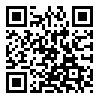Received: 2013/04/19 | Accepted: 2014/03/10 | Published: 2014/07/7
URL: http://ijwph.ir/article-1-317-en.html
BibTeX | RIS | EndNote | Medlars | ProCite | Reference Manager | RefWorks
Send citation to:
2- Physical Education Department, Eشducation and Psychology Faculty, Shiraz University, Shiraz, Iran
Aims: The present study was done with aim to predict the cognitive and motivational functions of sports imagery based on age, visual and motor imagery ability in Iranian veteran basketball players.
Materials & Methods: This descriptive-correlational study was done on 40 veteran basketball players participating in the national championship in 2007 in Shiraz who were selected by census method in 2007. The research tools were demographic, motor imagery (VMIQ), visual imagery (VVIQ) and sport imagery (SIQ) questionnaires. Data analyzed using SPSS16 software. Relation between variables was evaluated using the Spearman correlation coefficient and regression equation for each stage.
Findings: The age variable was correlated with motivational specific imagery functions, motivational-arousal general, motivationشal-experts general and sports imagery generally. The highest mean of the scores belonged to motivational specific imagery and lowest mean scores belonged to the cognitive general imagery. Visual imagery ability (with open eyes) for the motivational specific imagery function had also predictive role.
Conclusion: There is a correlation between sport imagery functions with age and the visual imagery ability with open eyes. Sport imagery functions (motivational specific, motivational-expert general and motivational-arousal general) are predicted based on age, which means that with increasing the age the use of these functions decreases. Also, by reducing imagery with open eyes, motivational specific function is reduced.








